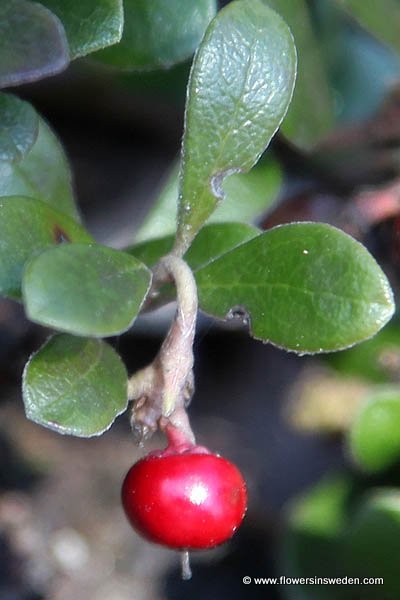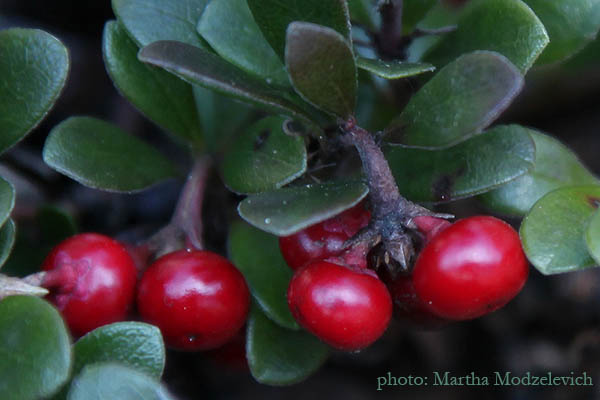
Derivation of thr botanical name:
Arctostaphylos from the Greek arktonstaphyle,"bear's grapes," since the fruits are an important food for bears.
Uva Ursi (Latin), means the same: the Bear's grape.
- The standard author abbreviation L. is used to indicate Carl Linnaeus (1707 – 1778), a Swedish botanist, physician, and zoologist, the father of modern taxonomy.
- The standard author abbreviation Spreng. is used to indicate Curt Polycarp Joachim Sprengel (1766 – 1833), a German botanist and physician.
- The standard author abbreviation Britt. is used to indicate Britton, Nathaniel Lord Britton (1859 - 1934), an American botanist, taxonomist, and first Director-in-Chief of the New York Botanical Garden.
- The standard author abbreviation Moench is used to indicate Conrad Moench (1744 – 1805), a German botanist
- The standard author abbreviation Wimm. is used to indicate Christian Friedrich Heinrich Wimmer (1803 - 1868), a German botanist and educator who was a native of Breslau (Poland).
In homeopathy, a tincture of the leaves is believed to be effective in the treatment of cystitis, urethritis, and urinary tract inflammations.
Arctostaphylos uva-ursi leaves are gathered in autumn, and are one of the best natural urinary antiseptics.
- In the thirteenth century, arctostaphylos uva-ursi was part of the pharmacopoeia of the Welsh "Physicians of Myddfai (herbalists in the twelfth century)."
- Carolus Clusius (1526 – 1609), a Flemish doctor and pioneering botanist, mentioned the therapeutic benefits of Arctostaphylos uva-ursi in 1601, as did D. C. A. Gerhard of Berlin in 1763.
- In the late 1600s New England herbalist John Josselyn (fl. 1638 – 1675) wrote about the merits of bearberries against scurvy and the "fervor of hot diseases."
- It had a place in the London Pharmacopoeia for the first time in 1788, though was probably in use long before.
The Uva ursi was brought into notice about the middle of the eighteenth century by Anton de Haen (1704 – 1776), an Austrian physician of Dutch ancestry born in the Hague, as an efficient remedy in nephritic and even in calculous cases. - Arctostaphylos uva-ursi was listed in the U.S. Pharmacopoeia from 1820 to 1926.
|


